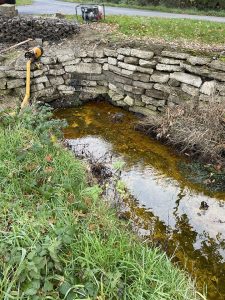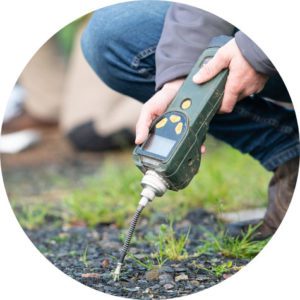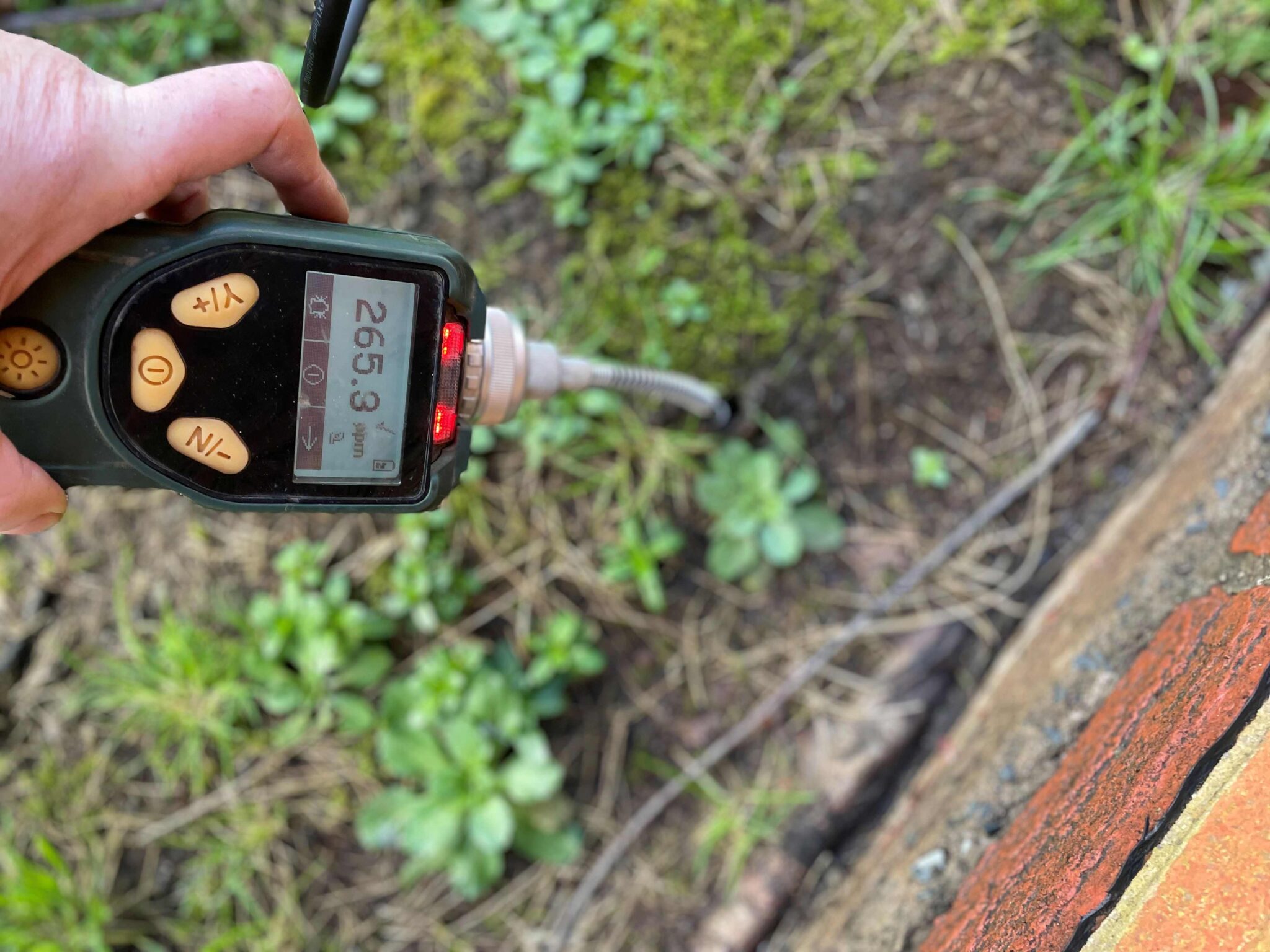What to do when oil spills in your drains? Or what happens when an oil spill reaches a drain and escapes? These are valid questions that you might be weighing if you’ve recently had a leak of oil from your tank, a boiler leak or your oil feed pipe has leaked. You are also likely thinking:
-
Does an Oil Spill in my Drains just Wash Away?
-
Can I Just Forget About an Oil Spill in my Drains?
-
Where Does an Oil Spill Go?
-
Do I Need to Call Someone & Report an Oil Spill in my Drains?
-
Should I Do Something About an Oil Spill in my Drains?
-
How is an Oil Spill in Drains Cleaned Up?
Does an Oil Spill in my Drains Just Wash Away?
In short no, oil will persist in the environment for a very considerable amount of time. Oil spills in drains are connected to ditches and streams. Streams then flow to rivers. Using surfactants or detergents on an oil spill does not “break it down” or degrade the oil in anyway. These chemicals simply break large pieces of oil into small pieces of oil. Small pieces of oil spill are now just as mentioned, smaller and more mobile which results in them being able to spread to a much larger area than before. By using detergents or surfactants you will be making an oil spill much worse.
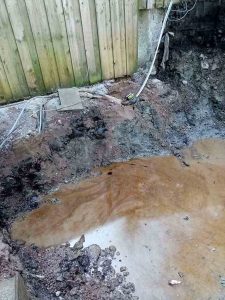
Oil doesn’t just go away
Can I just Forget about an Oil Spill in my Drains?
Can you just forget about an oil spill in a drain? Well, you shouldn’t just forget about an oil spill as the components / constituent chemicals are harmful to aquatic life. The small invertebrates found in streams, rivers, ponds and lakes will be affected first along with any soft vegetation. Toxins from oil spills will quickly bio-accumulate and affect larger species in the food chain killing fish, any bank vegetation, small mammals and even birds. Ignoring an oil spill is wrong.
Where Does an Oil Spill Go?
If you have had an oil spill from your tank, an oil spill from your boiler or an underground oil spill from your oil supply pipe spilled oil can take a few different pathways.
Landscaping around our homes usually consists of hard contoured surfaces. This is designed to ensure that rainwater is quickly dealt with. Unfortunately, this also applies to oil spills. OFTEC recommend that all non-bunded tanks are at least 10 metres from a watercourse, which includes a storm drain. In reality an oil spill onto concrete, a patio or a tarmac driveway can be washed by rain into a drain a significant distance away. This can very quickly lead to an oil spill in drains
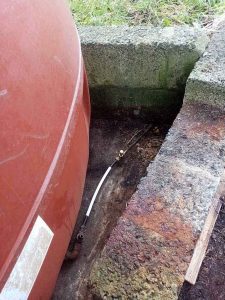
Oil has leaked from the tank fittings and soaked through the block and concrete into the surrounding soils.
Route 1
From a storm gully oil can flow quickly off a property via the drains, picking up speed as it joins larger culverts. These will quickly arrive in the natural environment where damage can be caused. Speed is of the essence as oil spills can migrate significant distances quickly. The faster action is taken the smaller the clean-up job.
Route 2
A second pathway involves an oil spill soaking through surface materials. These are normally bedded in highly porous aggregates, so once the surface is breached and in the case of say concrete this happens quickly oil spills are free to migrate by the path of least resistance. Normally spilled oil will find the most porous materials. This tends to be along pipes and drains, through ducts and conduits and along foundations. Oil lying around the outside of storm water and sewer pipes tends to penetrate these at the joints and at manhole chambers. Oil can then leave a property via this route and cause damage elsewhere. Again, this is another example of oil spills in drains affecting the environment!
Route 3
A further pathway by which an oil spill can cause environmental damage is by penetrating the surface materials and percolating down through any aggregate below. This pathway then depends on the local geology. Where there is shallow groundwater due to their being highly porous or fractured bedrock near the surface. Groundwater impact by oil spills is a greater risk where surface deposits are thin and porous, or even absent, leaving no protection to oil spills. In this case groundwater is highly vulnerable to oil spills. Groundwater resources should be pristine and untainted as they form the base flow to our rivers. Nowadays they also provide clean sources of drinking water for public water supply, industrial water supply and agricultural supply. Impact to this priceless resource would be potentially devastating.
Do I need to Report an Oil Spill in Drains?
Yes, morally and legally you should. All of the local Environmental Agencies in the UK, Ireland & Isle of Man have pollution reporting facilities on their websites. These are regulators and their function is to make sure local Environmental laws are enforced, particularly when oil spill affect drains. But ensuring that action is taken to remediate your oil spill on a water course is YOUR responsibility. The faster you act the easier it will be to contain and clean up.
Should I Do Something About an Oil Spill in my Drains?
Again, yes you should do something about your oil spill in your drains. At the very least you should contact an expert such as Gaea who can come to your property and carry out an assessment.
Doing nothing may well end up with you being prosecuted in criminal court by one of the fore mentioned regulators, and in our opinion, quite rightly so if you allow an oil spill to contaminate a water course via drains and do nothing.
Secondly, anyone else who is impacted by an oil spill in the drains of your property and who has quantifiable damage or loss as a result can take civil action against you for negligence. Consider the impacts to neighbours, farmers, water companies, fisheries, angling clubs or water sports clubs. You would not only be open to legal action from these entities but more likely their insurers.
Beyond the legal aspect, morally you really should take action.

This started as a small patch of oil below the boiler, but over time this builds up and spreads below the concrete where it can’t be seen.
How is an Oil Spill in Drains Cleaned up?
So, how is an oil spill in drains 0r on a watercourse cleaned up? No matter the watercourse, be it a ditch, drainage cut, canal, stream, river, pond or lake the principals are the same:
-
Act Quickly
-
Try & Stop the Leak
-
Get Advice
-
Follow Advice whilst waiting for help
-
Containment of Oil Spills in Drains
-
Recovery of Oil Spills in Drains
-
Survey & Assessment of Oil Spills in Drains
Act Quickly
Act quickly to minimise the damage caused by an oil spill and the cost to clean it up. It can’t wait! Use what ever material you have at hand to try and stop any oil spill from entering a drain. use peat, compost, soil, clays to surround any drains.
Try to Stop the Leak
This one should be obvious, investigate the cause of the oil leak, prevent further loss. The faster this happens the will be a greater chance of minimising the risk of impact to drains, any damage and cost. Sealing holes in tanks or closing shut off valves. These are simple things that can be done by anyone.
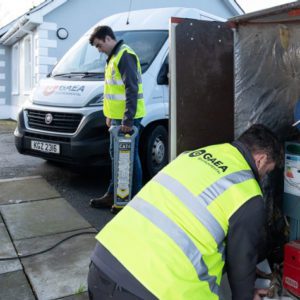
Gaea team members stopping a leak at a boiler.
Get Advice
Call someone such as Gaea who are experienced, qualified oil spill professionals. We will be able to guide you through the process over the phone and give you at the very least some free advice.
Follow Advice Whilst Waiting for Help
If you wish we can mobilise one of our highly trained oil spill response teams rapidly to your property. The right people with the right expertise at your property with all the right kit, sounds good?
Containment of Oil Spills in Drains
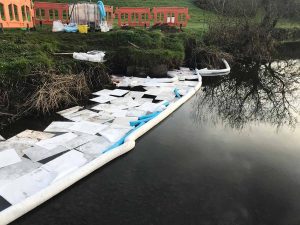
Containment of a diesel spill on a large river.
Local watercourses including ditches, streams, rivers, ponds and lakes are examined for signs of oil contamination. This also includes culverted water courses. The further spread of oil is halted by the strategic placement of booms. But all of these receptors are feed by oil spills in drains. There are several types of booms, the most common used are oil absorbent booms. These are often used in conjunction with other oil absorbent materials such as oil absorbent pads, oil absorbing pillows or oil absorbing sheets which soak up much of the oil that accumulates behind the booms. These are temporary measures and are designed for smaller spillages only.
Recovery of Oil Spills In Drains
The most effective manner in dealing with an oil spill in drains that becomes a freshwater oil spill is to recover the oil. Gaea use specialised pumps to skim oil off into large tanks. The tanks allow oil to settle and separate before the aqueous / water fraction is further treated with an Oil Water Separator and then an activated carbon filter to further clean the water.
Recovery of oils from an underground culvert just beside a large river.
Survey & Assessment of Oil Spills in Drains
Once we arrive at your property we will quickly assess what is going on. Part of the team will be responsible for investigating what has happened and what can be done to stop any oil migrating beyond the source.
Another part of the team will search for drains, ditches, sewers and rivers to make sure we know where your oil spill has gone. Finally, the last part of the team will conduct a soil survey / assessment to quickly determine if parts of your garden, driveway or buildings have been impacted.
Detailed scientific investigations are carried out to identify materials that contain high levels of oil that pose an on-going risk.
